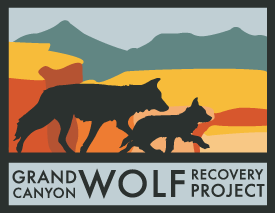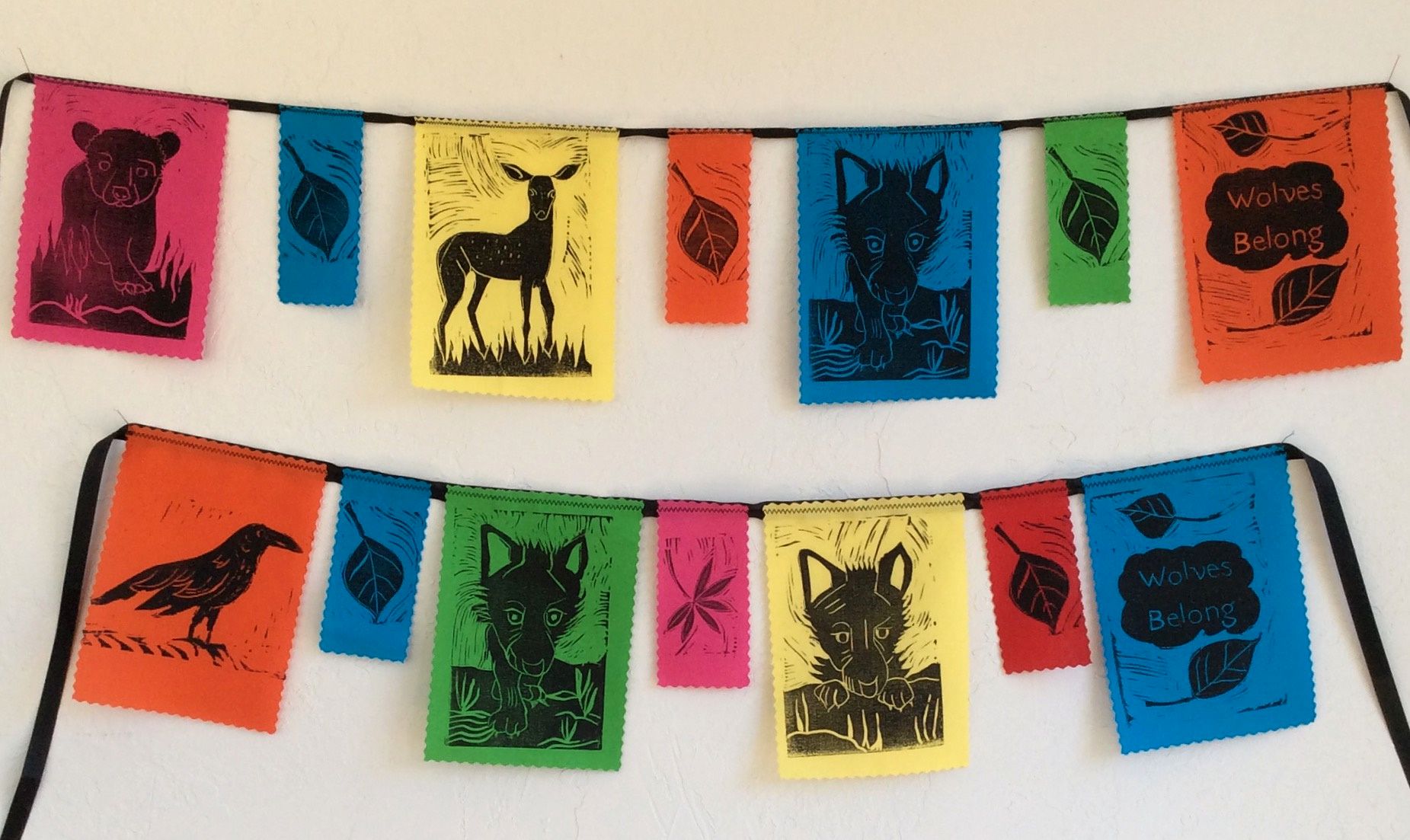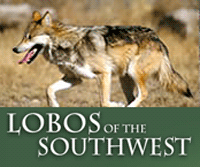by: Daniel Sayre, National Wolfwatcher Coalition's Southwest Regional Director
Land and wildlife, intertwined and inseparable. A discussion of Mexican gray recovery cannot be complete without the understanding that the preservation of habitat is the key to the recovery of the species. How we manage land and its resources, how we manage species, and how we manage competing interests will ultimately decide the fate of wolves.
The relationship of land and wildlife is complex and only now are we beginning to fully appreciate the cascade of effects that changes the very nature of the landscape when key elements are altered or removed. Aldo Leopold wrote in A Sand County Almanac: "I have watched the face of many a newly wolfless mountain, and seen the south-facing slopes wrinkle with a maze of new deer trails. I have seen every edible bush and seedling browsed, first to anaemic desuetude, and then to death. I have seen every edible tree defoliated to the height of a saddle-horn ... In the end the starved bones of the hoped-for deer herd, dead of its own too-much, bleach with the bones of the dead sage, or molder under the high-lined junipers ... So also with cows."
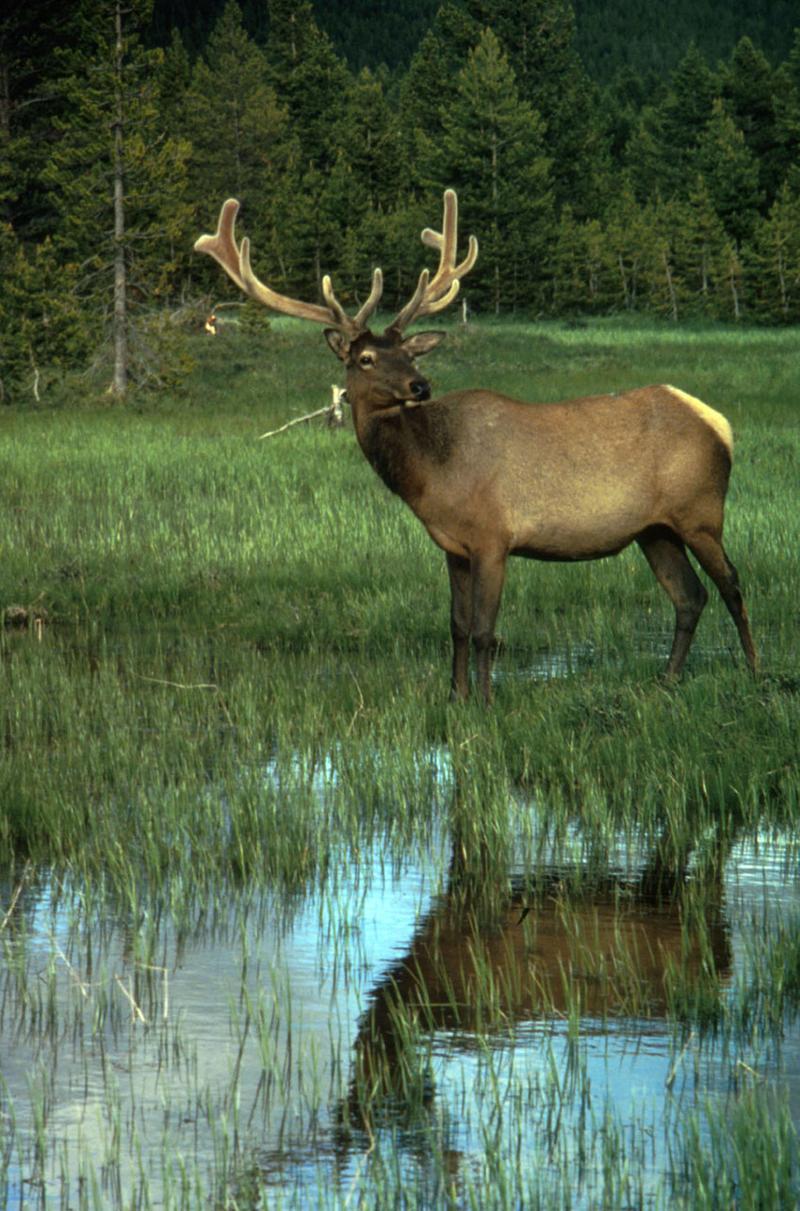
Elk in Velvet, USFWS, Blue Range Primitive Area
While this form of trophic cascade is supported by more recent scientific evidence, what Aldo Leopold knew in the first half of the 20th century is apparently still controversial to certain proponents of industries and activities which, by their very nature, denude or otherwise alter the landscape. It is with unequivocal certainty that humans have an impact on ecosystems through a variety of activities, one of which is the removal of keystone species such as apex predators.
Ultimately, if we now more fully understand the complex relationships affecting landscapes, we can use that knowledge to reinforce the importance of key species such as Mexican gray wolves. Cottonwood and willow riparian areas are often noted for high bird species diversity, and when rooted along stream banks provide cover and food for fish. I specifically make note of this relationship because such riparian habitat may be especially sensitive to over browsing. The key point to be made is that wolves not only predate upon ungulates but they cause them to move, therefore relieving pressure upon seedling trees. Such has been witnessed in Yellowstone to a very dramatic degree.
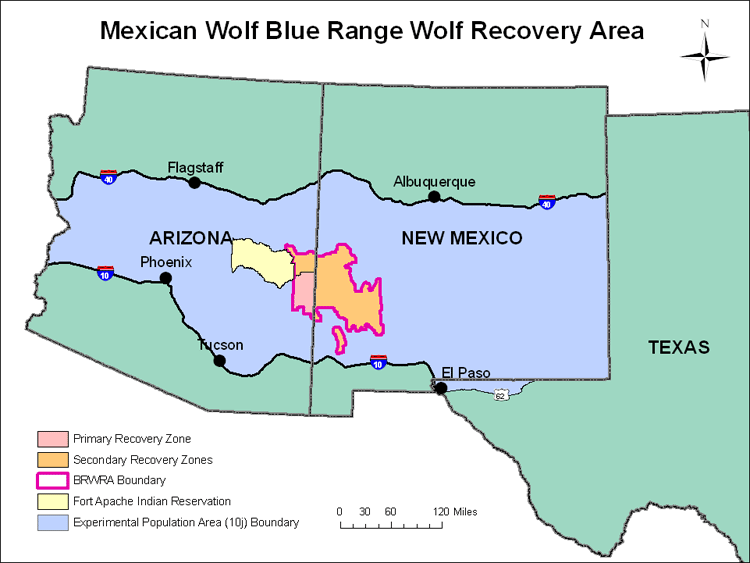
Map Courtesy: USFWS
The Blue Range Wolf Recovery Area (BRWRA) within south-central Arizona and New Mexico is considered ideal wolf recovery habitat which includes abundant water, elk, and deer, and spans an area twice the size of Yellowstone National Park. The region also includes the worlds first designated wilderness area, created in 1924. The recovery area itself is divided into specific zones designated as the primary recovery zone, secondary recovery zone, both contained within the BRWRA, and the so called experimental population area boundary (10j). To further expound upon the specifics of the zones, any new release must occur within the primary zone while wolves that are re-released may be released into the secondary zone. Any wolves populating the 10j area may be subject to removal from the wild or relocated to within the primary or secondary zones.
Confused yet? If this seems all too complicated, it is. Wildlife knows no artificial boundaries, and ultimately will not be contained within such boundaries. Driven by an innate instinct to survive and propagate, a wolf will never know it crossed such a threshold. Ideally the primary and secondary recovery zones should be managed in a way as to not prevent formation of new packs or cause undue injuries or deaths in relocation efforts.
In support of our Lobos, Wolfwatcher encourages you to support the Rural Economic Vitalization Act (REVA) which allows federal grazing permittees to voluntarily relinquish grazing permits, support the preservation of wilderness designated areas by sending a note of support to your representatives, and perhaps most importantly have a complete appreciation for the profound interconnectedness of the elements within ecosystems, or as Aldo phrased it, "Think like a mountain." ~Daniel Sayre

Aspen Pack Translocation, USFWS
(Daniel has come out to volunteer with the Grand Canyon Wolf Recovery Project's Paseo del Lobo several times this summer. This article first appeared in the National Wolfwatcher Coalition's e-newsletter on August 5, 2012. It has been reposted here with his permission.)
